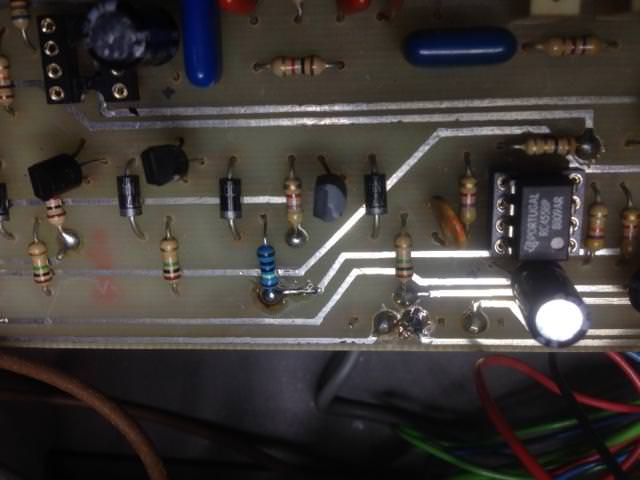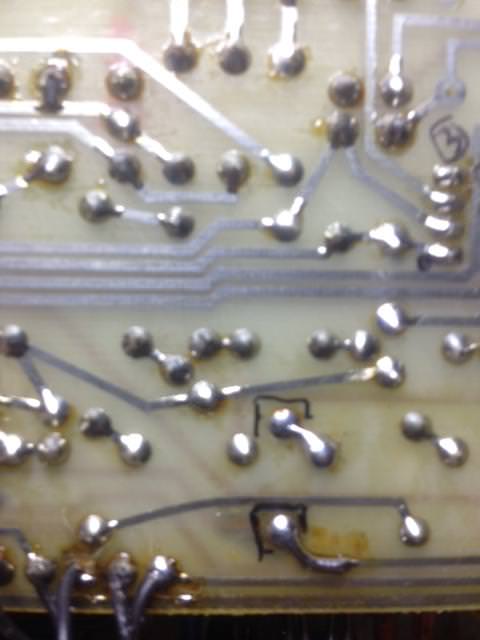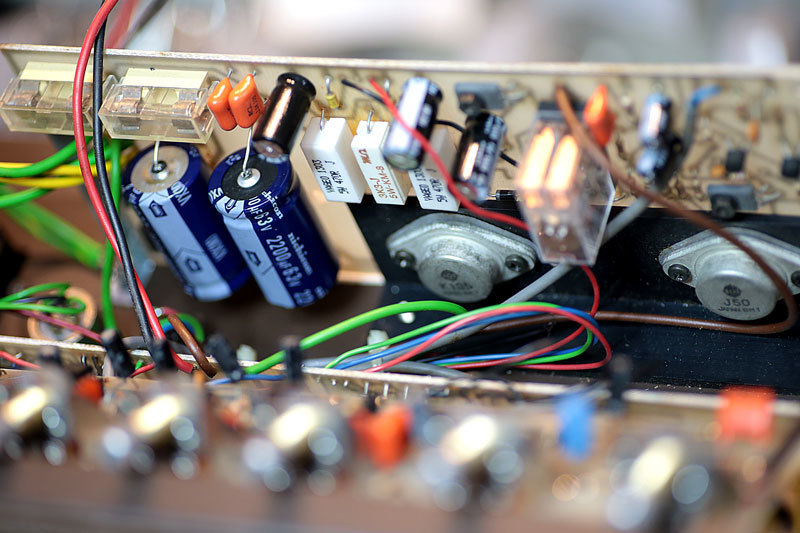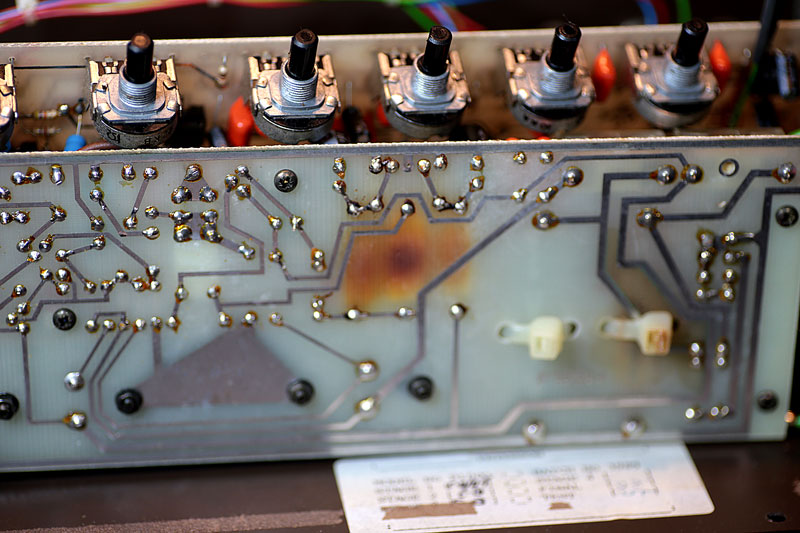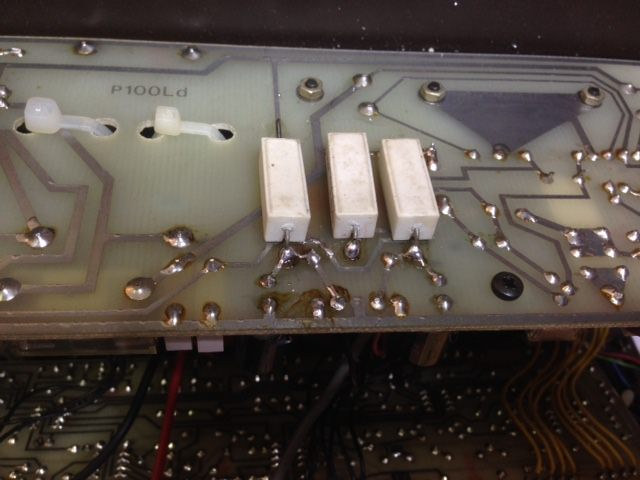Hello,
I'm trying to repair a Peterson P100G guitar amplifier.
It's a Solid state amplifier, it is famous in the Jazz circuit as the Polytone.
I can't find the schematics for this amp, and the company is long gone.
I made a video of the noise in the amplifier, please check it out:
https://www.youtube.com/watch?v=x9JXBEyagZM&feature=youtu.be
The Problem
-There's some noise s that randomly blow.
The noise is independent of the guitar being plugged in or not.
It doesn't matter if the guitar has the volume cut or not .
I guess the problem is from the preamp because if I plug anything into the Power amp only the noise disappears. Also, I'm using an Audio probe at the moment, and the last preamp opamp's output just before the Power amp has the noise there, so it should be before that.
I've heard these type of noises before in failing transistors and in Condenser mic capsules
If you have any tips please let me know something
I'm trying to repair a Peterson P100G guitar amplifier.
It's a Solid state amplifier, it is famous in the Jazz circuit as the Polytone.
I can't find the schematics for this amp, and the company is long gone.
I made a video of the noise in the amplifier, please check it out:
https://www.youtube.com/watch?v=x9JXBEyagZM&feature=youtu.be
The Problem
-There's some noise s that randomly blow.
The noise is independent of the guitar being plugged in or not.
It doesn't matter if the guitar has the volume cut or not .
I guess the problem is from the preamp because if I plug anything into the Power amp only the noise disappears. Also, I'm using an Audio probe at the moment, and the last preamp opamp's output just before the Power amp has the noise there, so it should be before that.
I've heard these type of noises before in failing transistors and in Condenser mic capsules
If you have any tips please let me know something



